The Future Command and Liaison Vehicle (FCLV) was a British Army programme to replace Ferret, and some Saxon, FV432 and Land Rover vehicles.
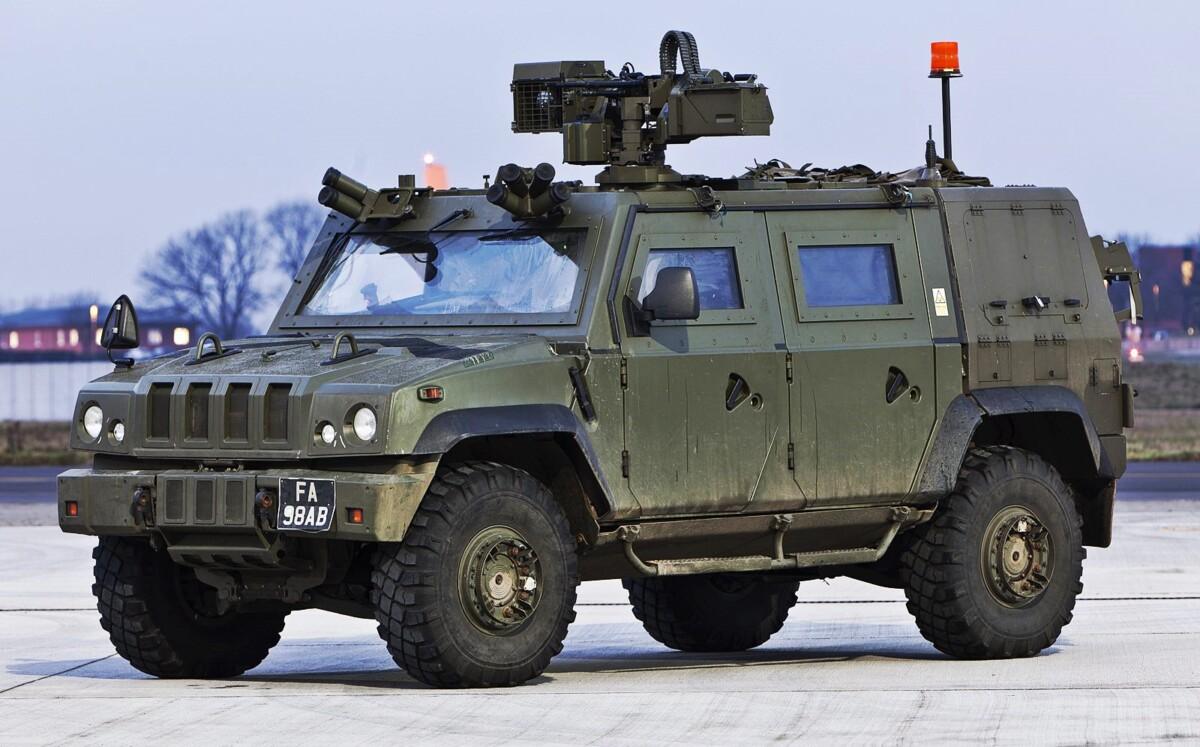
The Future Command and Liaison Vehicle (FCLV) was defined by the National Audit Office as.
The Future Command and Liaison Vehicle (FCLV) will provide protected mobility for Combat, Combat Support and Combat Service Support Forces in the fire direction, reconnaissance, liaison, and low level (platoon) command and radio rebroadcast roles.
FCLV will have significant utility with some elements operating in the direct fire area and thus requiring a higher Surveillance and Target Acquisition (STA) capability than those mainly operating in the indirect fire area.
It will replace the Combat Vehicle Reconnaissance (Tracked), Fighting Vehicle 430, Saxon and Land Rover currently used in these roles
As with TRACER and MRAV, the Future Command and Liaison Vehicle (FCLV) requirement was a product of the Future Family of Light Armoured Vehicles (FFLAV) in the mid to late eighties.
Among others, the requirement was to replace Ferret, and some FV432 in the command, and command and liaison roles.
GKN proposed their Simba vehicle.
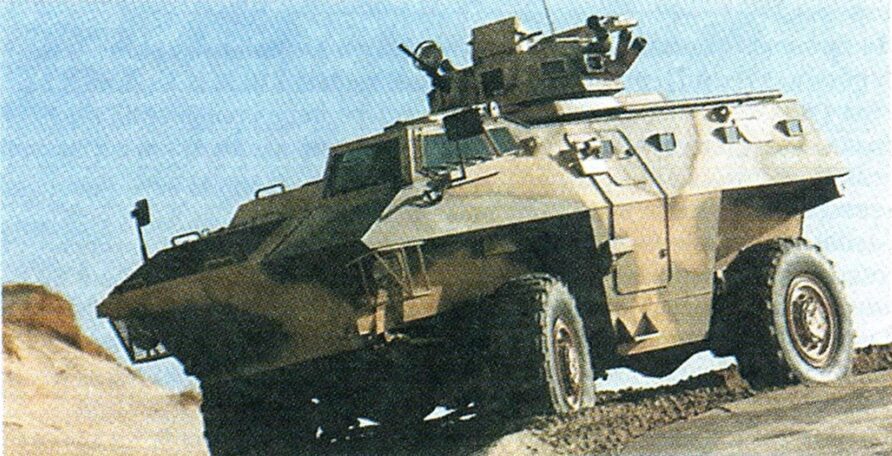
Alvis went with the Panhard Véhicule Blindé Léger (VBL).
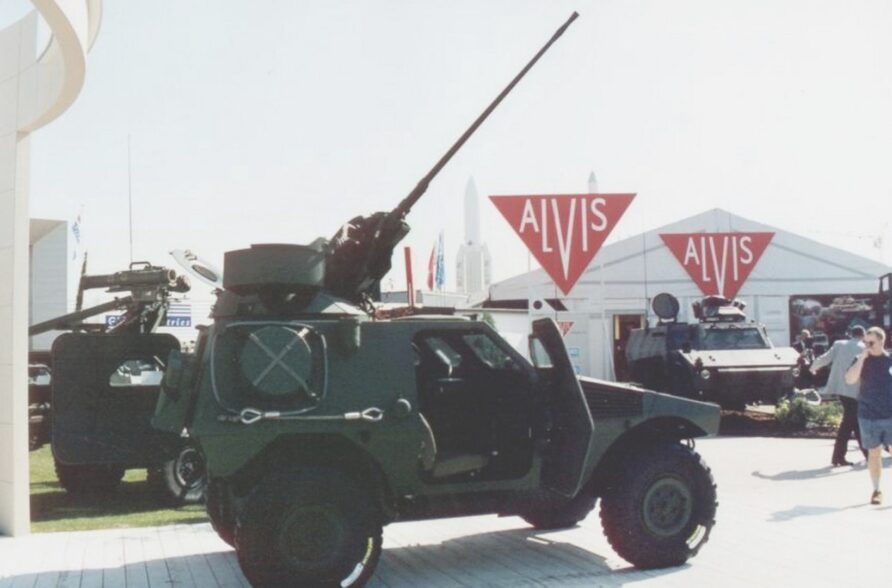
FFLAV closed in the mid-nineties, and the basic requirement split three ways into the Light Armoured Vehicles Strategy, Multi Base Armoured Vehicle split into two (ABSV and MRAV), TRACER, and Future Command and Liaison Vehicle, FCLV.
Future Command and Liaison Vehicle (FCLV)
Initial Gate was approved in August 2000, five years after the closure of FFLAV, with the first entry on the Defence Procurement Agency website, in October 2001.
Roles were to include
Scout
- Manoeuvre Support Battlegroup Close Reconnaissance
- Manoeuvre Support Battlegroup Mortar Fire Controller and Forward Observation Officer
Utility
- Liaison Officers for Armoured, Armoured Recce and Armoured Infantry Units
- Commander’s vehicle for Engineer Troops, Anti-Tank, Mortar and supporting fire platoons
- REME asset co-ordination
- Rebroadcast on BattleGroup nets and Regimental Signal Officers
- Route proving for Close and General Support Engineer units
- Battery Reconnaissance Officer
Industry then responded to the requirements.
Five bidders emerged during this initial phase.
Vickers, with the RG-32M
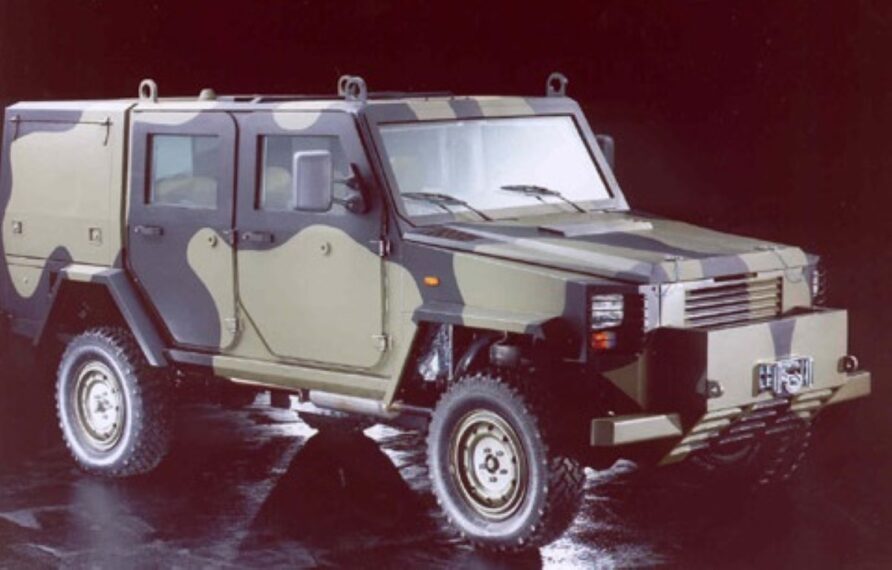
Hunting Engineering, with the Ateliers de Construction Mécanique de l’Atlantique (ACMAT) VRBL ‘Ranger’
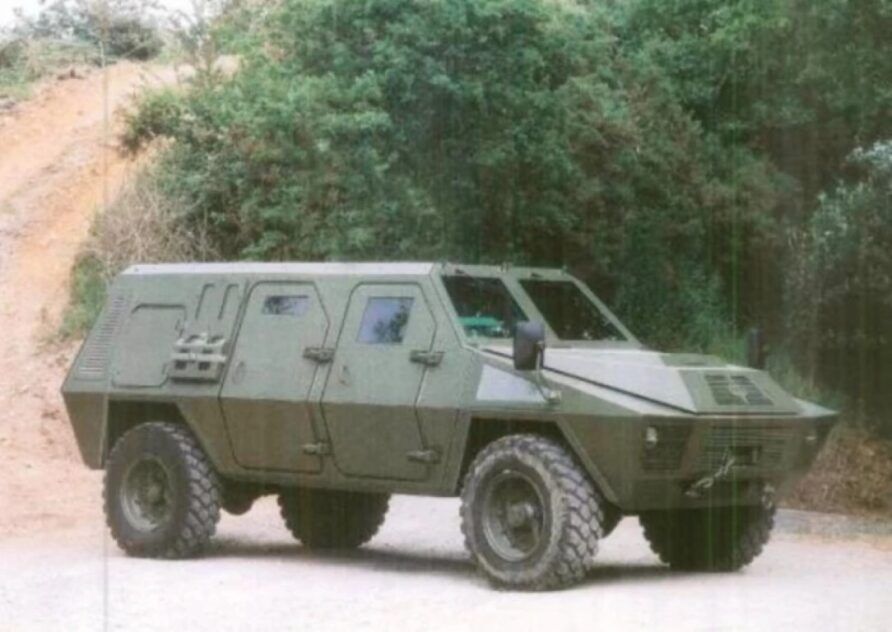
Alvis, with the Scarab
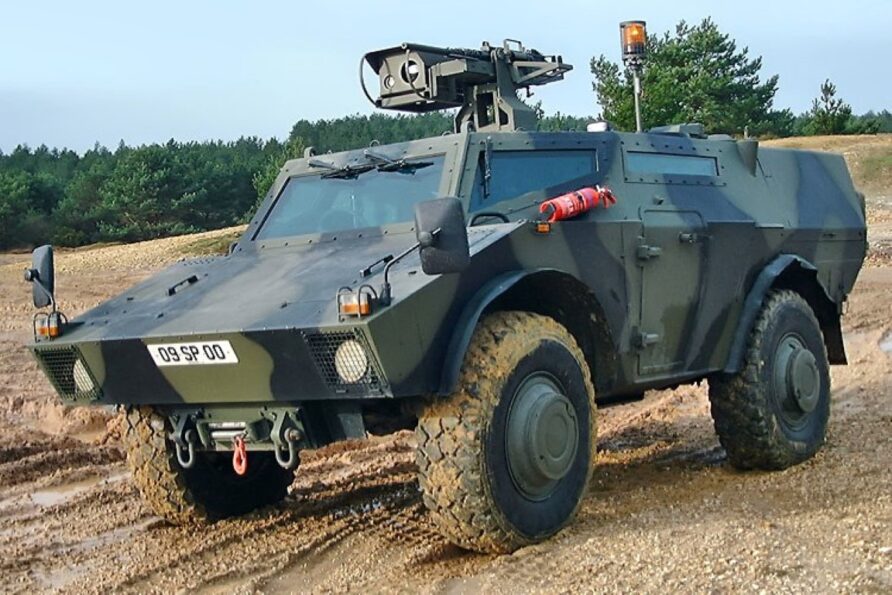
Iveco Defence, with their Puma vehicle
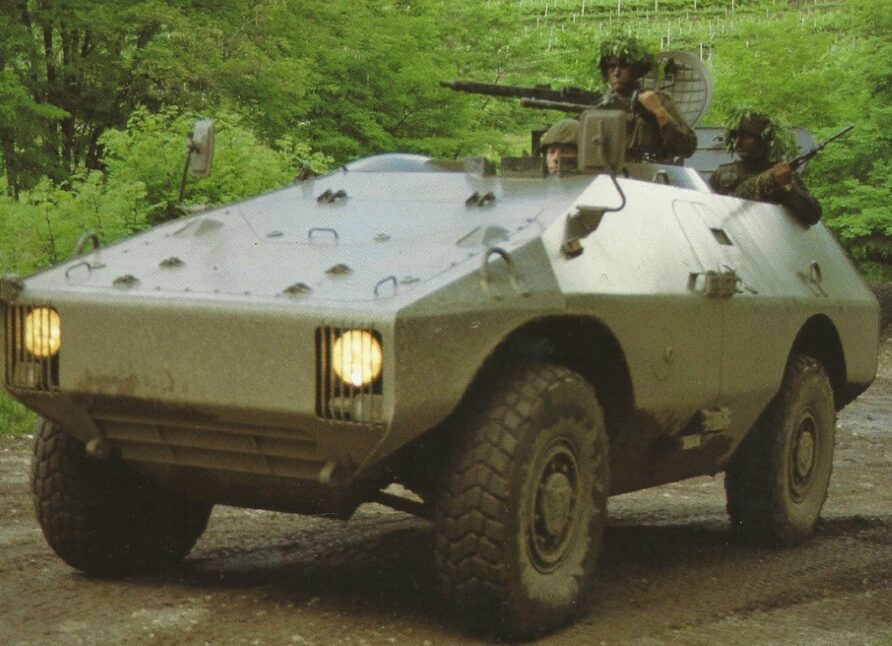
NP Aerospace, with a protected Land Rover
In January 2002, a £1.5m risk reduction contract was awarded to Hunting Engineering, Alvis Vehicles and Vickers Defence Systems.
As part of this work, Risk Reduction Studies Trials programme contenders showed off their vehicles.
The FCLVs will be able to operate under fire on the battlefield by night or day in command, reconnaissance and liaison roles – or in support of peacekeeping operations. “Our policy of Smart Acquisition means that we can buy this equipment off the shelf with minimum modifications – so getting versatile vehicles into the hands of frontline units more quickly and at less expense.. “The vehicles are being put through rigorous trials to ensure that our Armed Forces have the very best equipment at their disposal”
Lord Bach
The risk reduction contract resulted in three companies demonstrating five different vehicles.
Alvis still stayed with Scarab, but they also included the Iveco MLV Multi-role Light Vehicle (following an agreement between Alvis Vehicles and Iveco Defence Vehicles), known as the Lince.
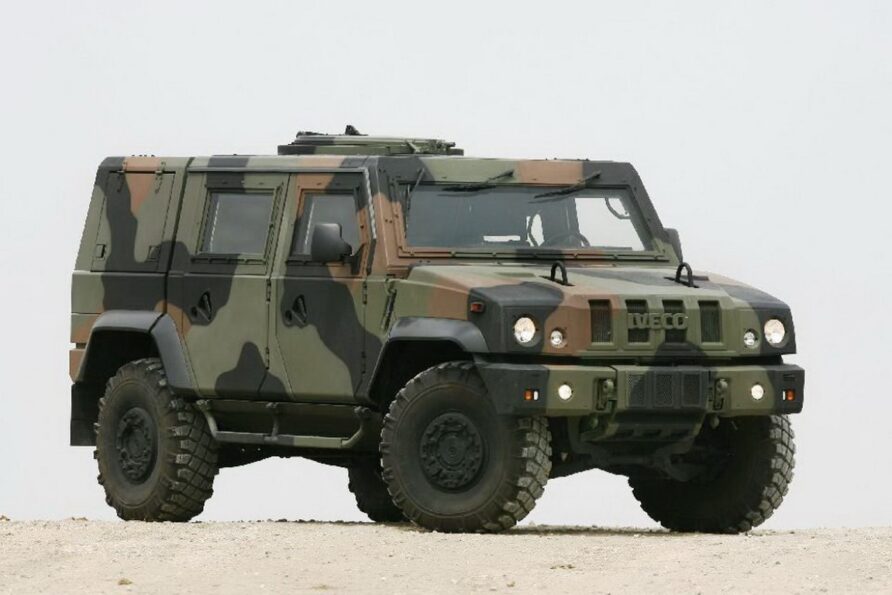
Hunting Engineering, by then known as INSYS, stayed with the ACMAT VRBL,
Vickers, showed the RG-32M, and the slightly smaller RG-31M (also known as the Nyala)
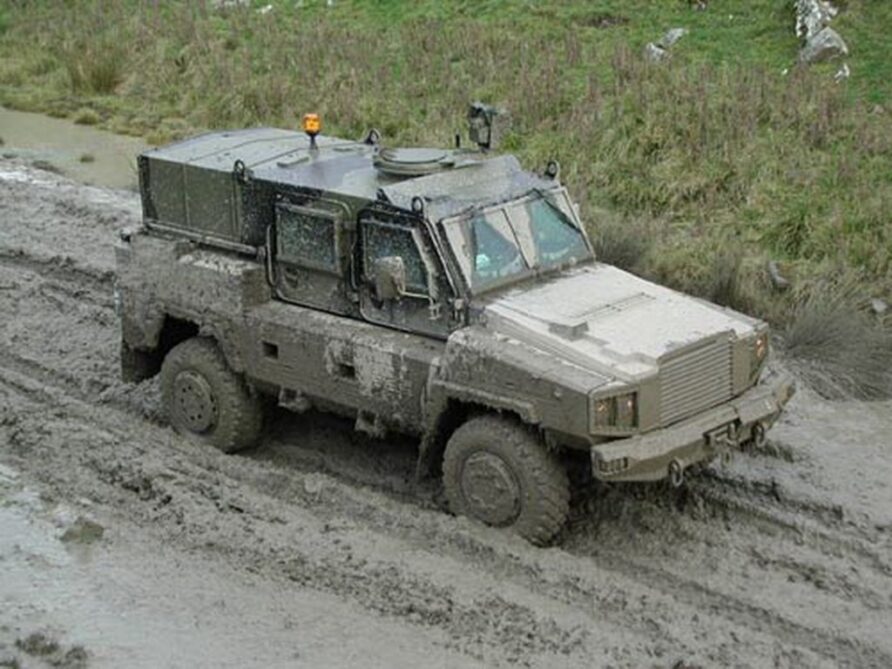
Alvis and Vickers subsequently merged (it was a busy time for the defence industry).
In July 2003, Alvis PLC announced they had been selected to deliver FCLV
Alvis plc is pleased to announce that its UK subsidiary, Alvis Vickers, has today been selected as winner of the competition to supply the Future Command and Liaison Vehicle (FCLV) for the British Army.
Subject to final contract negotiations, Alvis Vickers will receive a contract valued at around £200m to supply almost 500 MLV vehicles. MLV is a 4×4 high mobility light armored vehicle providing protection against small arms fire and mines. The MLV is based on the Iveco LMV vehicle which has been developed for a major Italian Army program.
For the FCLV program Alvis Vickers will install UK mission equipment comprising principally a weapon station, armour pack and communication systems. MLV is a complete family of vehicles around 7 tons incorporating the latest automotive technology. It will be used in a wide range of Command and Liaison roles in the British Army, replacing a variety of older vehicles.
The demonstration phase of the program will run until 2005, and series deliveries will take place between 2006 and 2009. This extends the firm UK order book of Alvis Vickers, the principal current element of which is the Engineer Tank System which will be delivered 2005-2007.
MLV is a modular design which can readily be adapted to meet other requirements both in the UK and for export. Alvis Vickers has signed an agreement with Iveco which provides substantial rights in the export market. The prospects for additional sales of MLV beyond the core FCLV program are therefore good.
The UK MOD also announced today that it would not be continuing with the Multi-Role Armoured Vehicle (MRAV) program into a production phase as the vehicle is no longer considered suited to the changing requirements of the British Army.
The UK will negotiate withdrawal from the program at the earliest opportunity. Any longer term role for Alvis in MRAV will depend on the plans of the German and Dutch partners. In any event it would be a small role in comparison to the work which would have been involved in building vehicles for the UK.
Whilst the UK decision not to implement production of MRAV is a disappointment, Alvis needs to be flexible in the face of customer requirements changing in response to evolving threats.
The UK MOD is in the process of launching a project for a new family of light/medium armored vehicles known as the Future Rapid Effects System (FRES), which will absorb some of the roles previously foreseen for MRAV. Alvis Vickers is well placed to play a leading role in this project, and success in this, together with work on FCLV, will provide a strong medium and long-term UK workload for Alvis Vickers.
Moreover, both the FCLV vehicle and the FRES concept are perceived to be well attuned to the long-term requirements of the export market.
Nick Prest, Chairman and Chief Executive of Alvis plc, commented:
Winning FCLV is a demonstration of Alvis competitiveness and flexibility. It provides good long-term business for Alvis Vickers. Whilst the MOD’s decision not to take MRAV into a production phase is disappointing, Alvis’s prospects in the UK market remain very promising.
Further information was announced in November 2003, specifically, the contract award.
Baroness Gould of Potternewton
Asked Her Majesty’s Government What progress has been made in awarding the contract for the Future Command and Liaison Vehicle.
Lord Bach
We are pleased to announce that the Ministry of Defence has today signed a contract worth £166 million (including VAT) with Alvis Vickers Ltd, for the manufacture of the Future Command and Liaison Vehicle (FCLV). On 17 July we announced that the FCLV would be deployed with the RAF Regiment and that the contract value would be worth over £200 million.
Ongoing work on armoured fighting vehicle rationalisation has led to a review of the initial requirement for vehicles. Consequently, we have revised the size of the initial procurement of FVLV whilst retaining the option to procure additional FCLV at a later date. The RAF Regiment will no longer receive vehicles from the initial fleet of FCLV and the contract value of the initial work has been revised.
The FCLV will perform the command and liaison role and replace the ageing and disparate vehicle fleet within the manoeuvre support brigades comprising elements of the 430 Series, Saxon, Land Rover and Combat Vehicle Reconnaissance (Tracked) fleets. From its planned in-service date of 2006, the FCLV will provide levels of crew protection and mobility commensurate with their roles in an increasingly extended ground manoeuvre area. It will offer protection against small arms, blast and antipersonnel mines.
Those in the direct fire zone will contain a self-defence weapon (SDW) that can be operated under armour to provide suppressive fire and surveillance and target acquisition (STA) system will be provided to enhance situational awareness, reconnaissance, targeting and reporting.
The vehicle has been selected to deliver the solution to the Armed Forces’ requirement for enhanced speed, reliability, flexibility and protection for a wide range of users in combat or peacekeeping operations.
The award of this contract to Alvis Vickers Ltd is excellent news for both our Armed Forces and the defence industry. It will sustain approximately 35 highly skilled jobs at the Alvis Vickers Ltd facility at Telford, and a further 25 within other UK companies.
This is the culmination of work conducted by both the MoD and industry, and is a good example of the principles of Smart Acquisition being put into practice. It is incumbent on the MoD and industry to work together to ensure that our Armed Forces have access to the right equipment, in the right quantities, at the right time and at the right price.
The contract was for 401 vehicles in two versions, 326 Group 2 with a self-defence weapon and target acquisition and surveillance system and 75 fitted for but not with.
The remote weapon system was to be an AEI Ordnance Enforcer.
The planned In service date was 2007, although it would not enter service until 2008, the delays resulting in issues discovered during trials.
In 2006, the controversy surrounding the Panther Command and Liaison Vehicle (CLV) deepened as it became clear that the Iveco vehicle had been pushed by the MoD at a late stage, despite not being initially entered by any of the bidders
There was also continued confusion about the amount of locally manufactured content. It was originally claimed that the vehicles would be manufactured in the UK, but this proved to be not the case, as only modifications to the base vehicle were completed in the UK.
Although the £166 million contract did include some logistic support elements, it was being unfavourably compared to a Swedish purchase of the RG-32M vehicle from BAE Land Systems OMC.
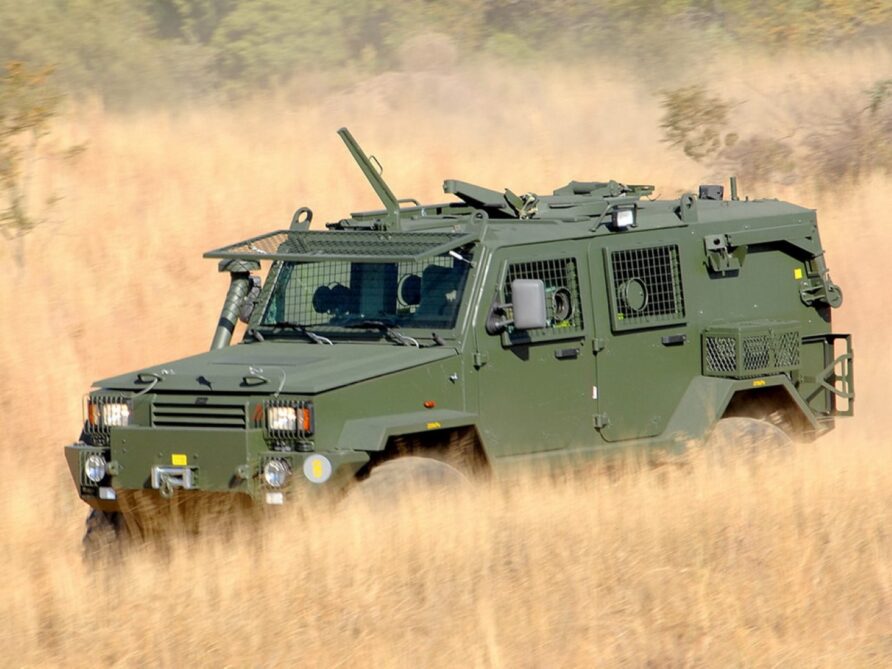
Using published costs from the Swedish ministry of defence, the equivalent contract value would have been less than £75 million for a vehicle that many argued had much better protection against mines and IED’s.
RG-31 was a proven vehicle, the RG-32 simply an evolution of it.
In the same year, given the general unsuitability of the Panther Command and Liaison Vehicle for operations in Iraq, some Bulldogs were fitted with Remote Weapon Stations, taken from the Panther programme.
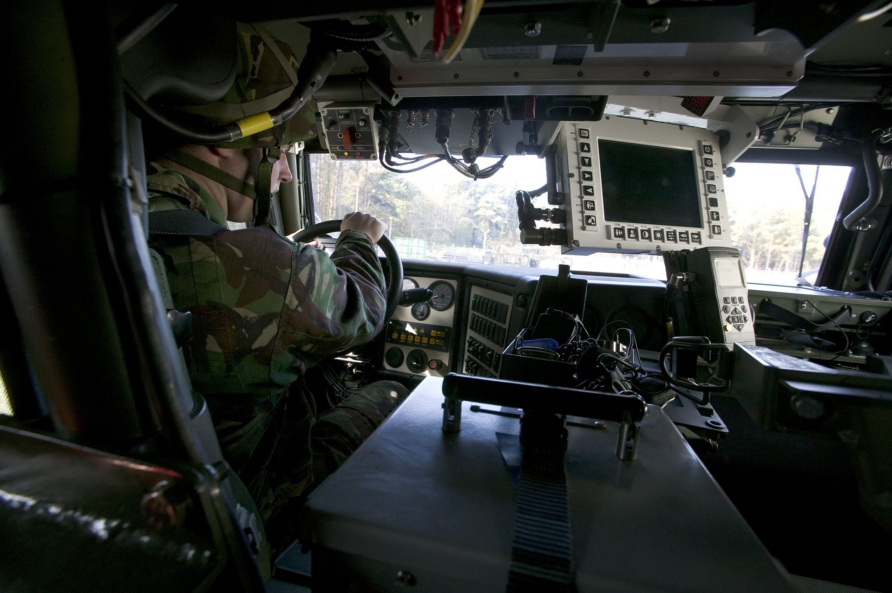
Iveco showed off a couple of concepts for a long wheelbase and 6×6 variant of the LMV.
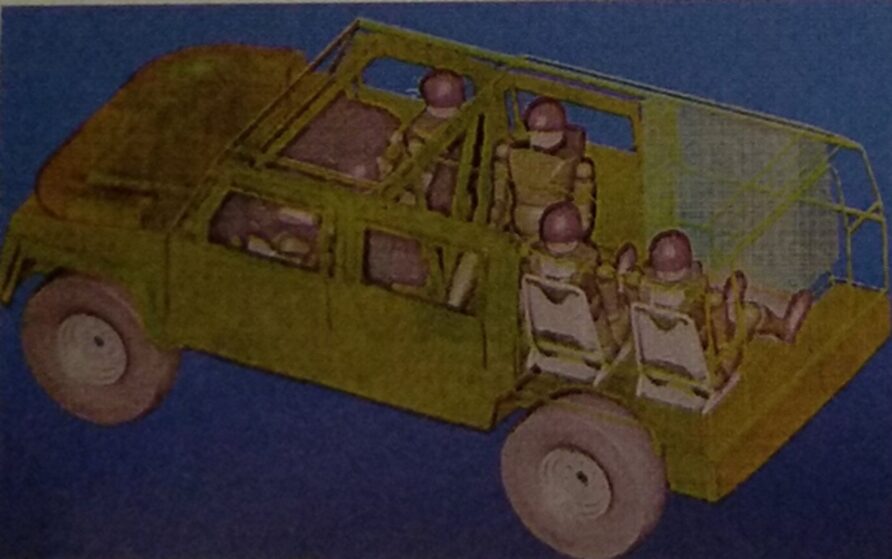
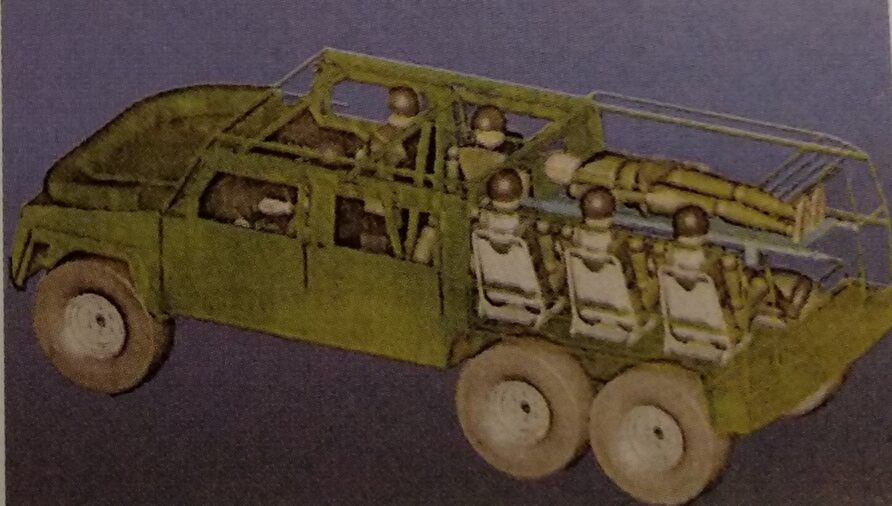
Before reading on, would you mind if I brought this to your attention?
Think Defence is a hobby, a serious hobby, but a hobby nonetheless.
I want to avoid charging for content, but hosting fees, software subscriptions and other services add up, so to help me keep the show on the road, I ask that you support the site in any way you can. It is hugely appreciated.
Advertising
You might see Google adverts depending on where you are on the site, please click one if it interests you. I know they can be annoying, but they are the one thing that returns the most.
Make a Donation
Donations can be made at a third-party site called Ko_fi.

Think Defence Merch
Everything from a Brimstone sticker to a Bailey Bridge duvet cover, pop over to the Think Defence Merchandise Store at Red Bubble.
Some might be marked as ‘mature content’ because it is a firearm!
Affiliate Links
Amazon and the occasional product link might appear in the content, you know the drill, I get a small cut if you go on to make a purchase
Panther Command and Liaison Vehicle (CLV)
The Panther Command and Liaison Vehicle (CLV) entered service in 2008.
BAE was awarded a £28 million contract in 2008, for support services on the Panther vehicle to provide better availability and lower costs. The Panther was reported to be a maintenance intensive vehicle with poor availability.
In 2008, Iveco proposed a new version of the Panther/LMV to meet the then open Operational Utility Vehicle System (OUVS)
After a £20m upgrade and preparation contract, the first Panthers were deployed to Afghanistan in 2009.
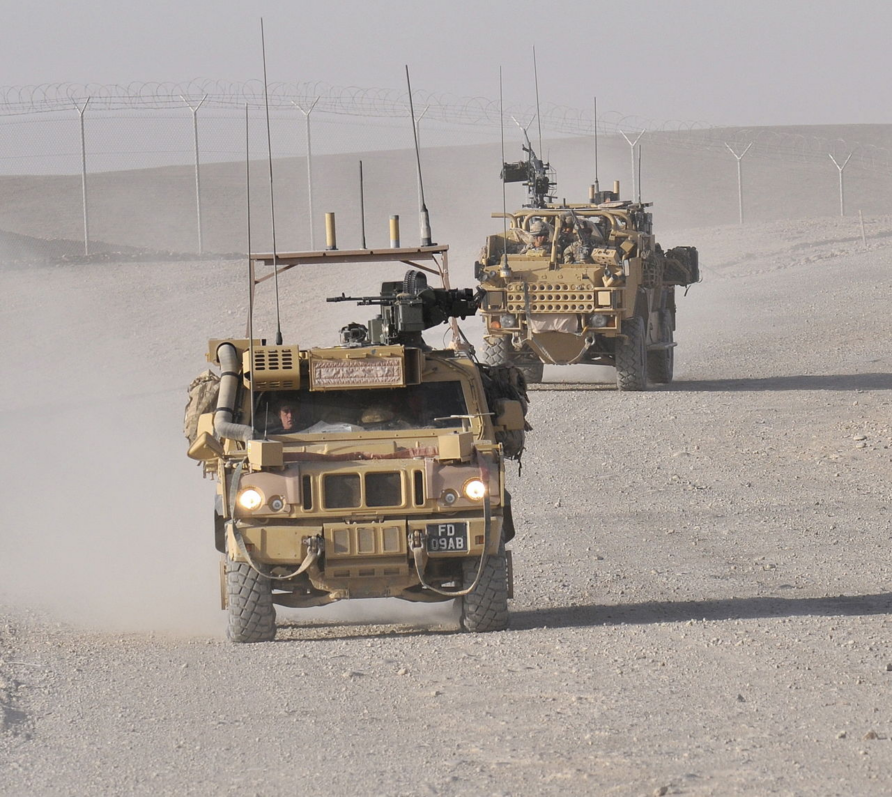
This Theatre Entry Standard (Helmand) was for 67 vehicles only, the remainder of the 401 strong Panther fleet not being deployed.
Improvements included additional ECM equipment, a rearview camera, additional roof hatch, extra armour and a redesigned engine air intake.
In 2017, BAE was awarded a contract to supply two experimental STRIKE Tactical Hotspots, an innovative communication solution to support the bandwidth and communications demands of STRIKE Brigades.
The equipment was to be fitted into a modified Panther vehicle.
The experimental STRIKE Tactical Hotspots which will be used by the British Army are the product of a technology development programme funded by us in collaboration with General Dynamics and Airbus. The Hotspot integrates Falcon broadband with Bowman TacCIS and SATCOM-on-the-Move, enhanced with the power of 4G, WiFi and Tactical Datalinks (WEnDL™) capability.
In May 2018, it was widely reported that Panther CLVs had been placed on the disposal list, although no news on this since.
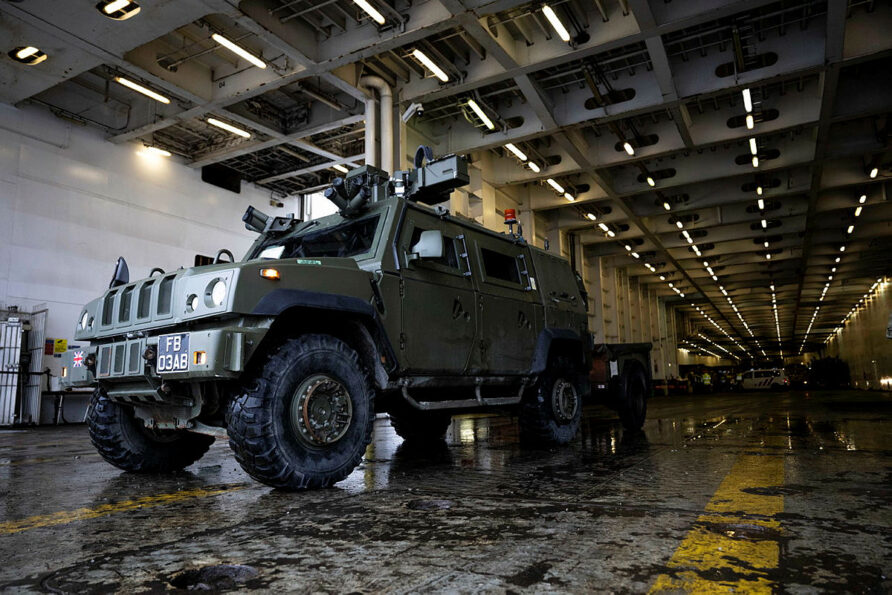
The UK has spent more than £220m on FCLV and Panther, not including the Strike Hotspot contract and other ongoing support costs, more than £500k per vehicle.

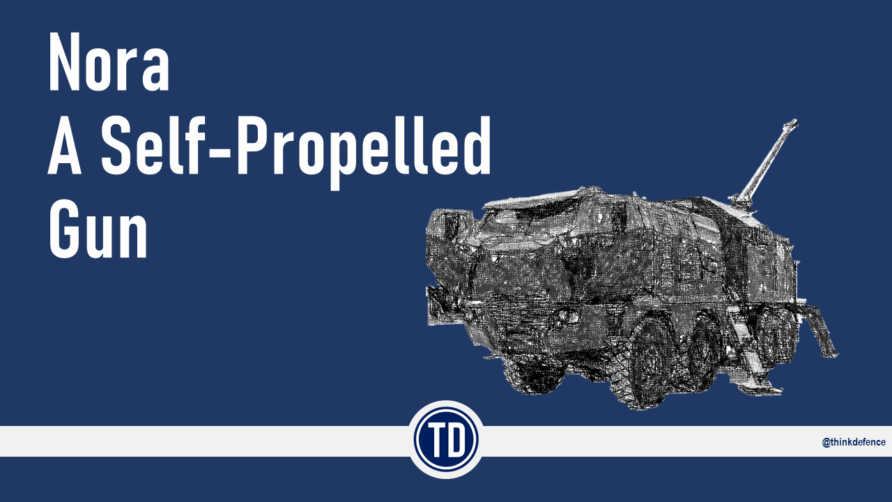
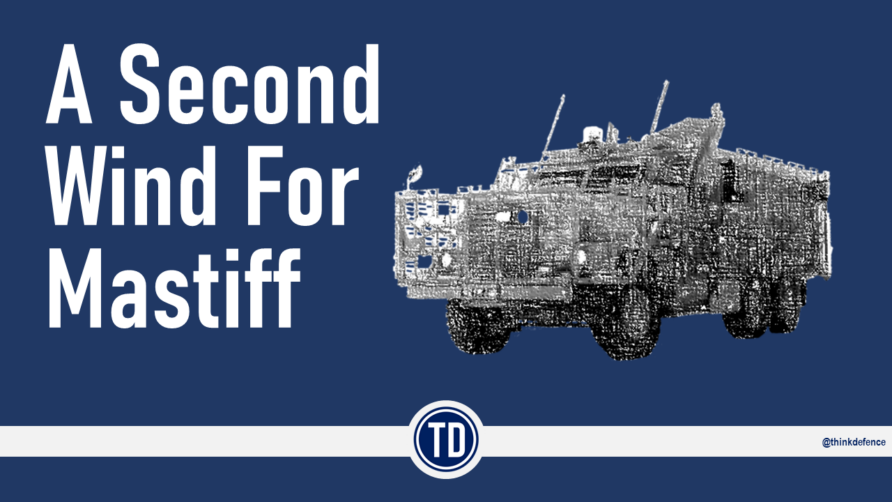
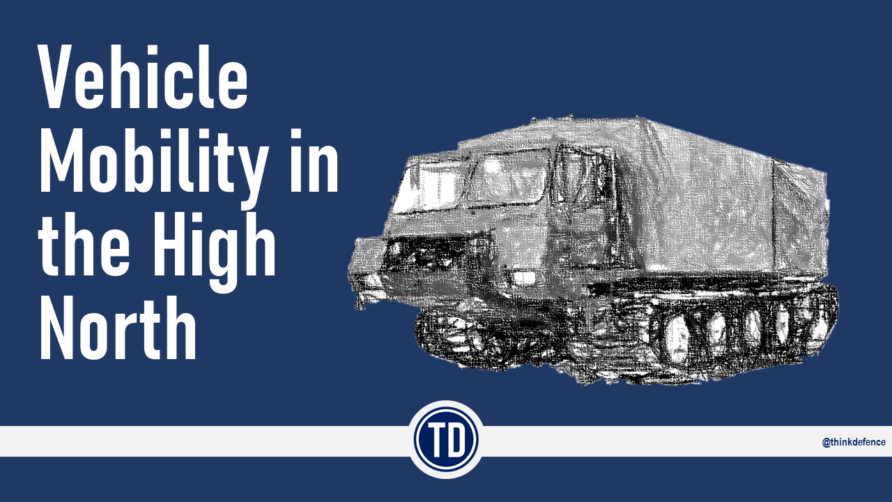
Why are they disposing of them, could they not be used as a mount for the Starstreak missiles instead of new Vamtec trucks?
Think the rationale for VAMTAC is the launcher has already been certified, so we would avoid paying for that
They are disposing of them because they are not capable of fulfilling the role they were purchased for. VAMTAC will repeat the issue. The questions you should be asking are a) WHO in MoD pushed the purchase of this vehicle when it wasn't originally in and have they been fired? b) Did any MoD or Army officers associated with the Panther purchase take positions in any companies associated or benefiting from the Panther purchase?